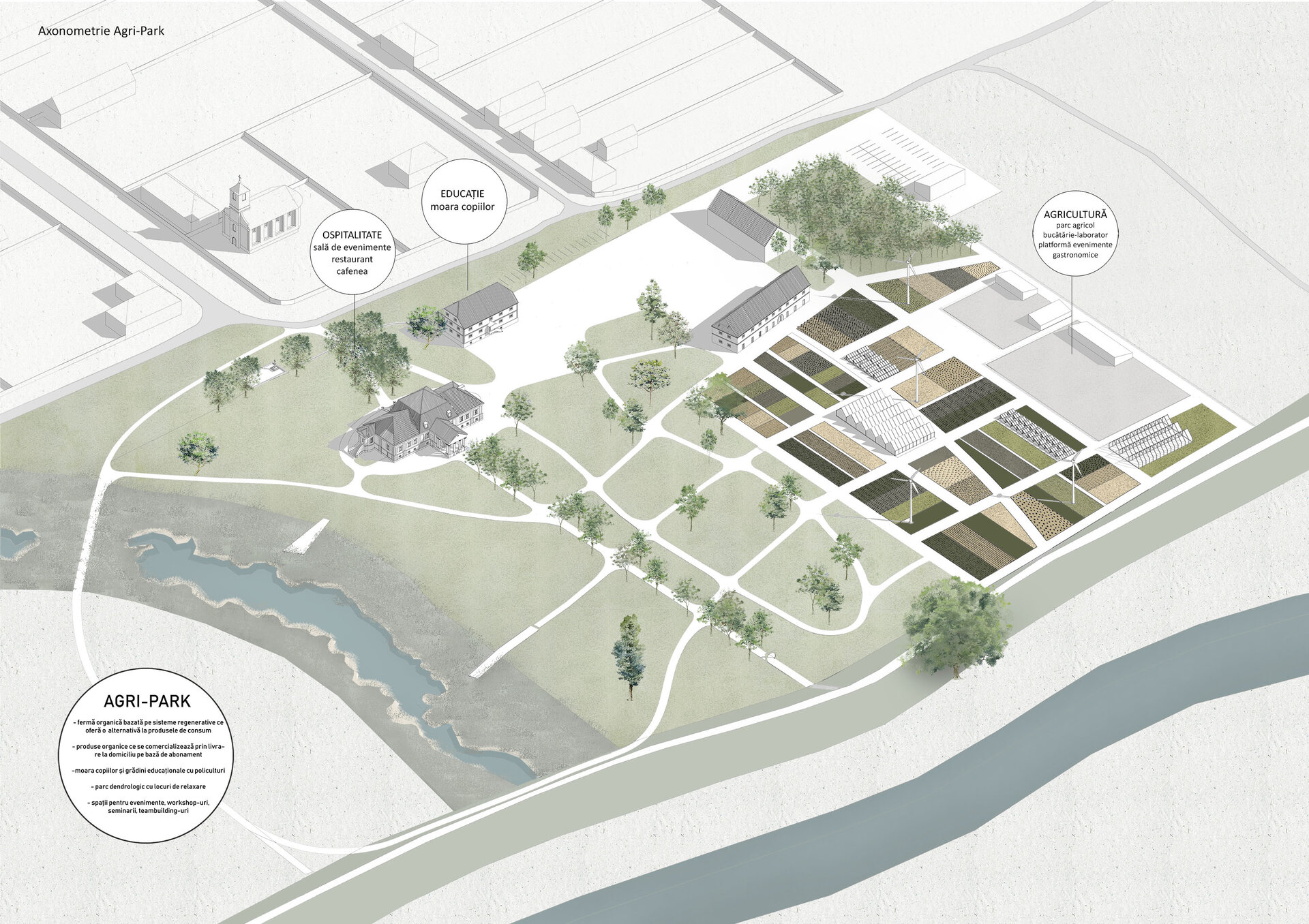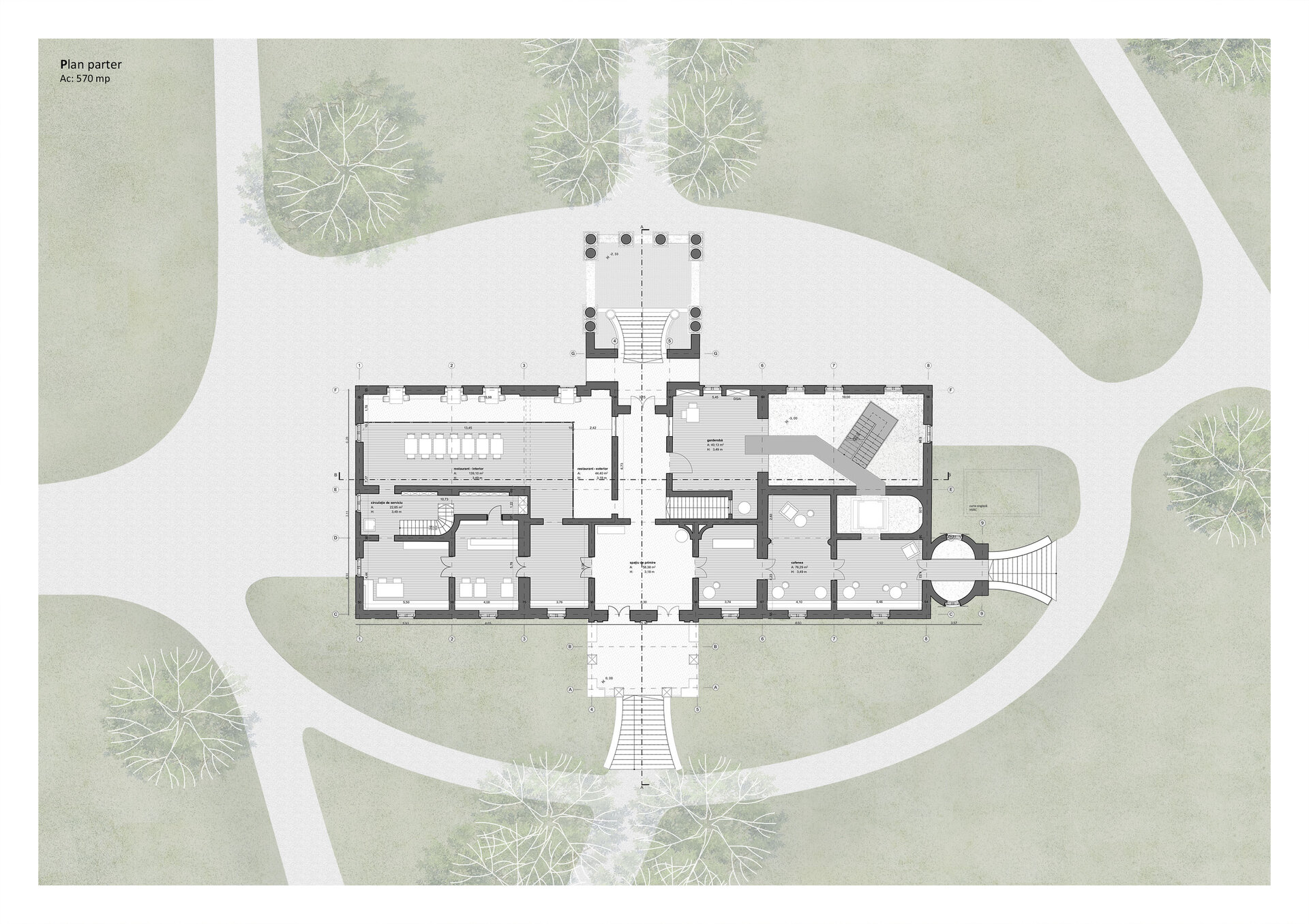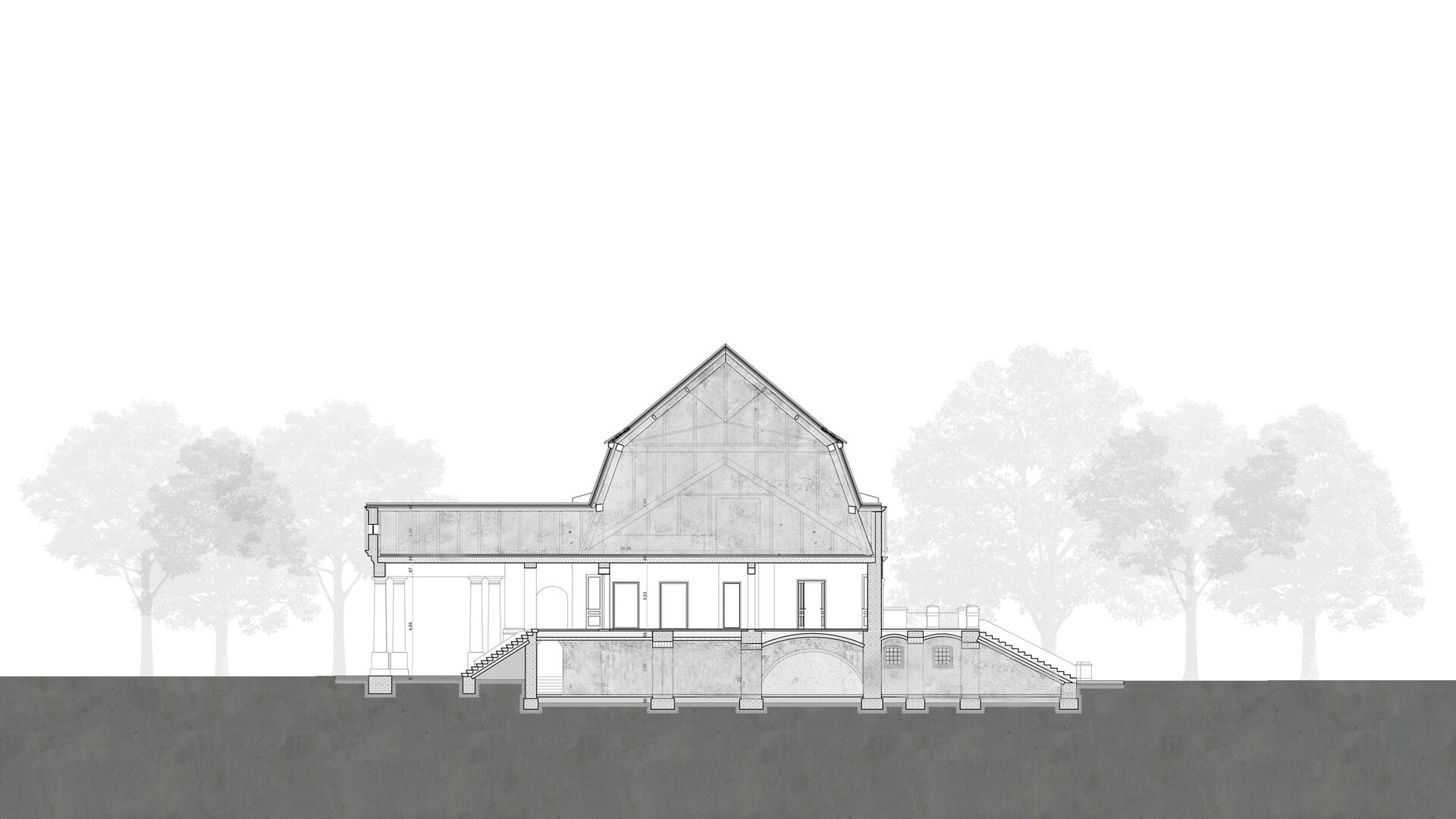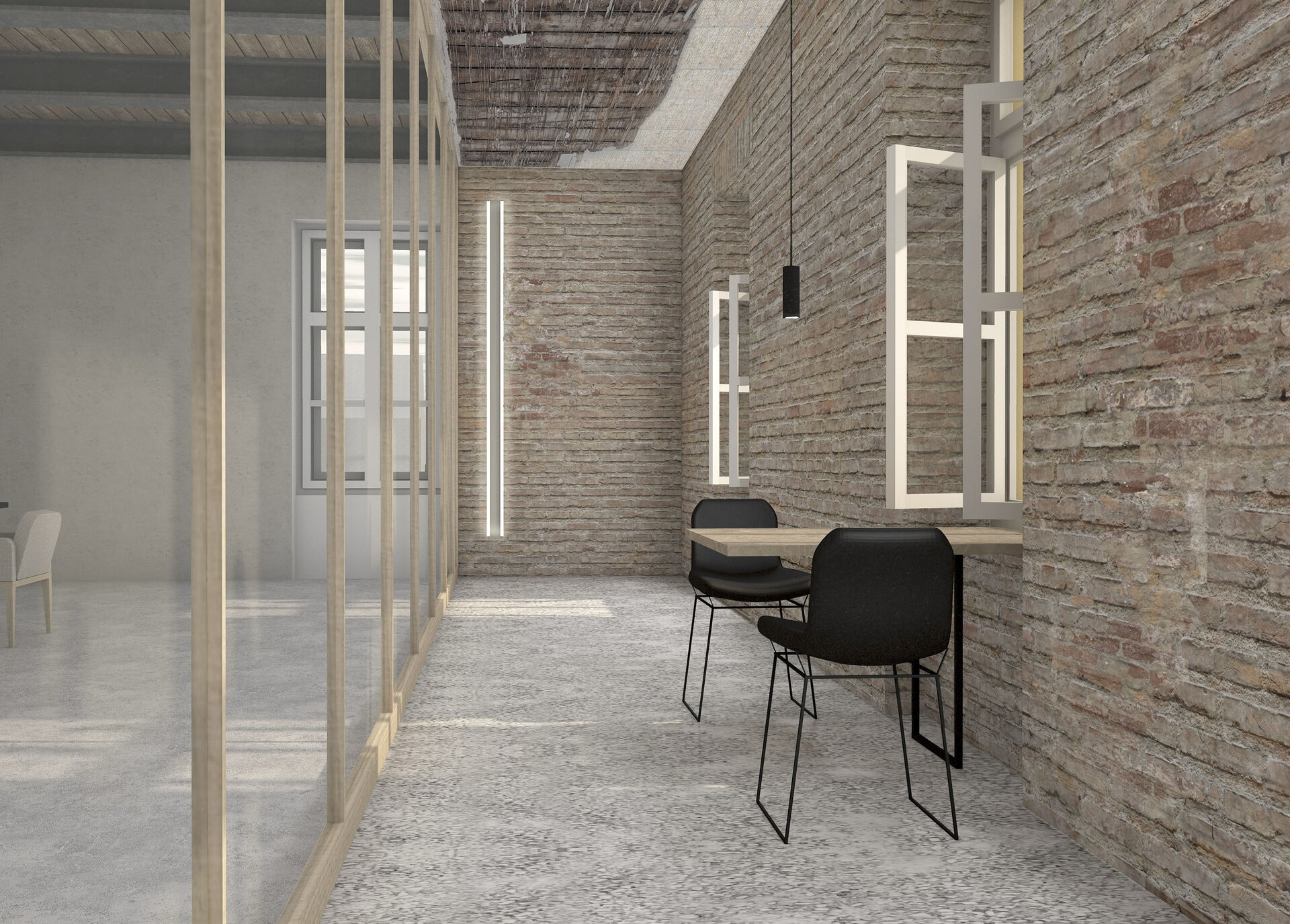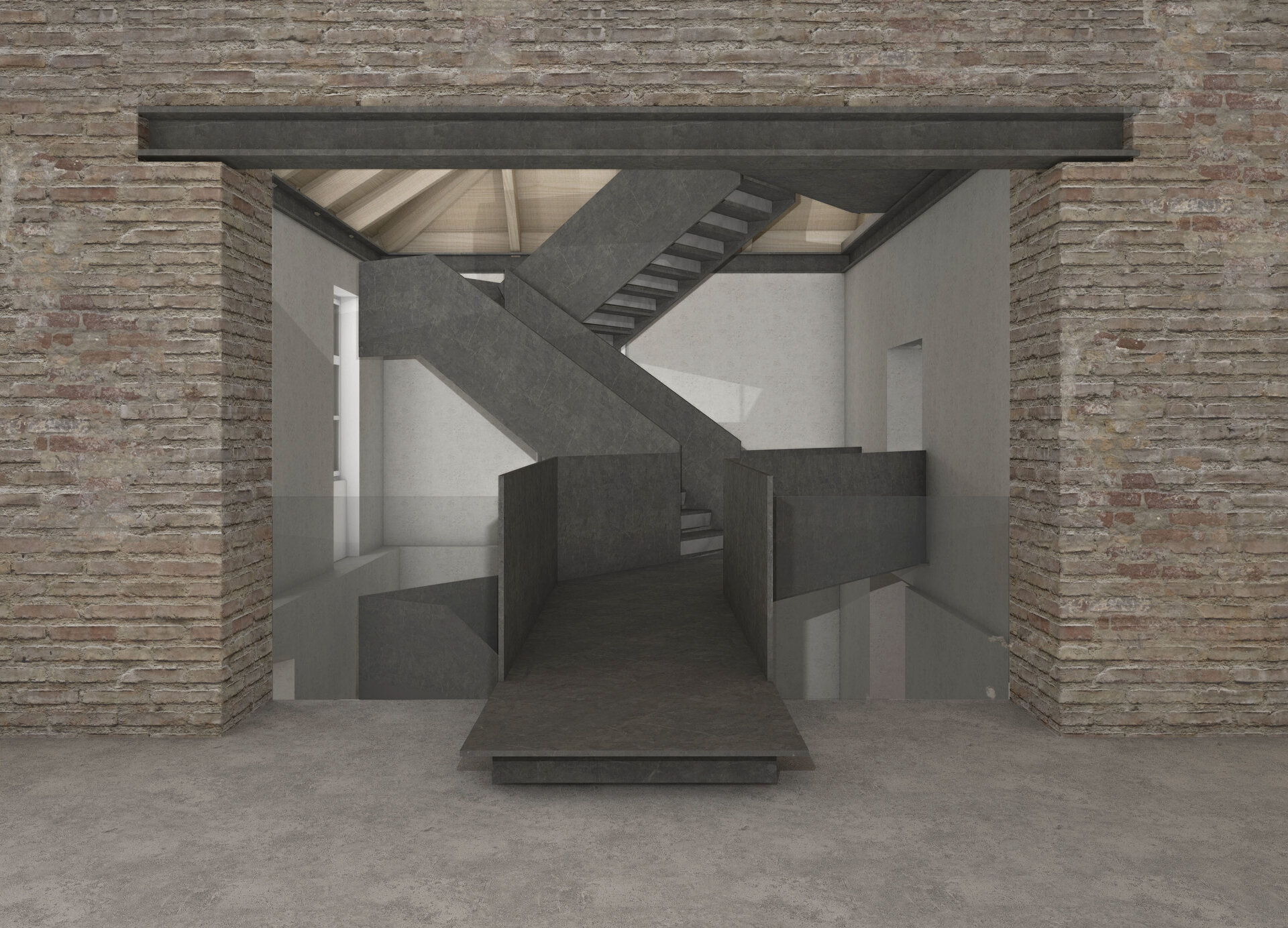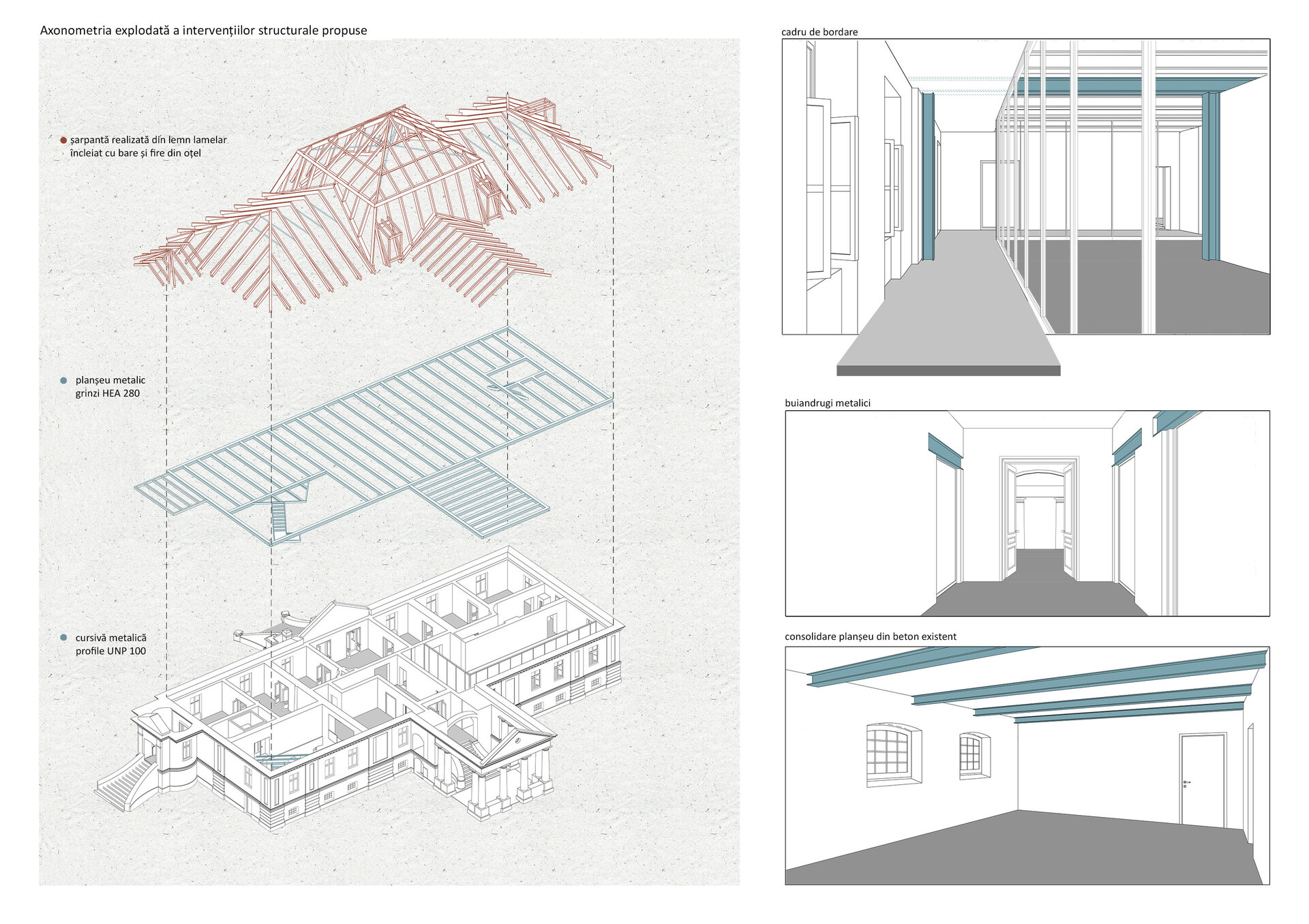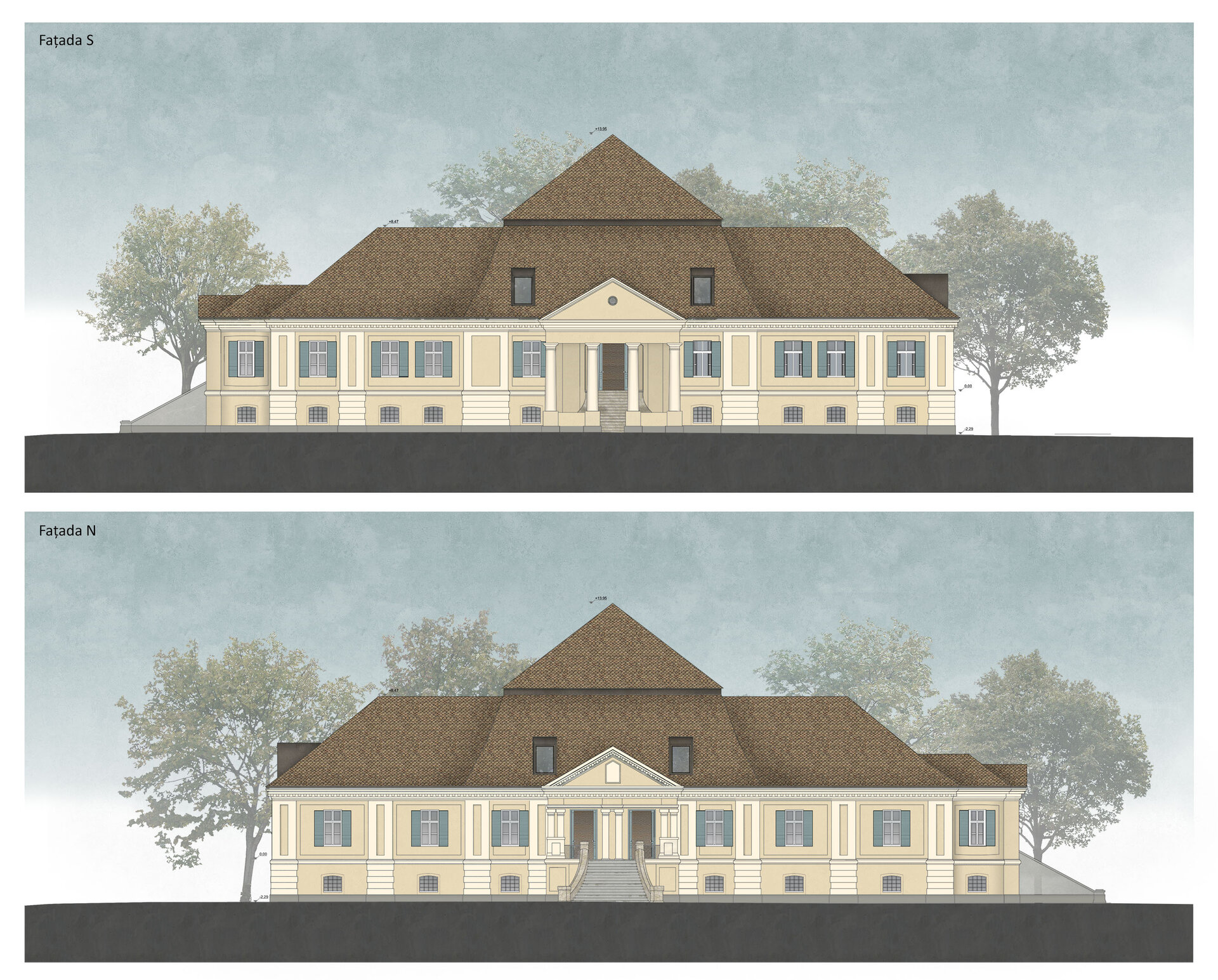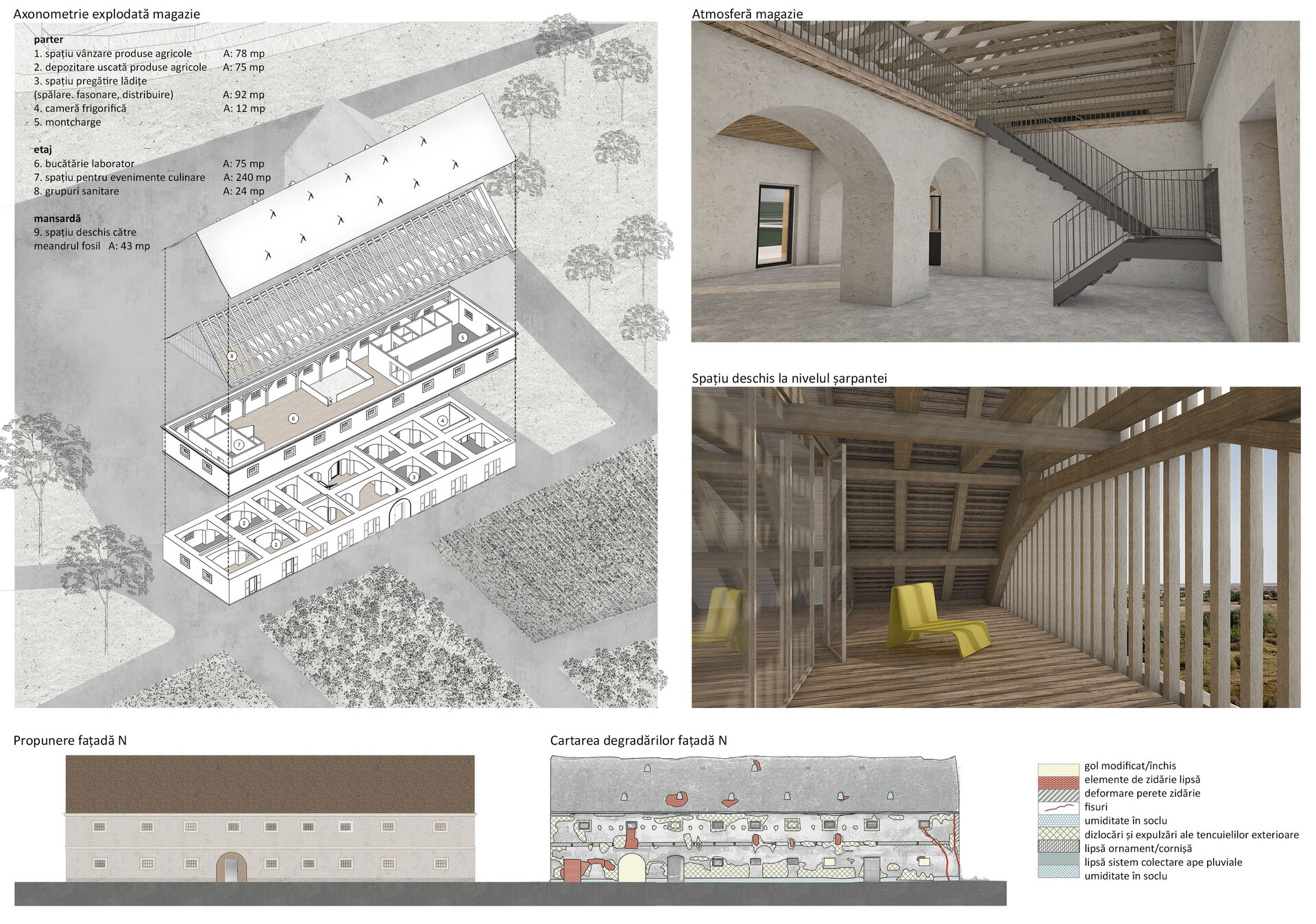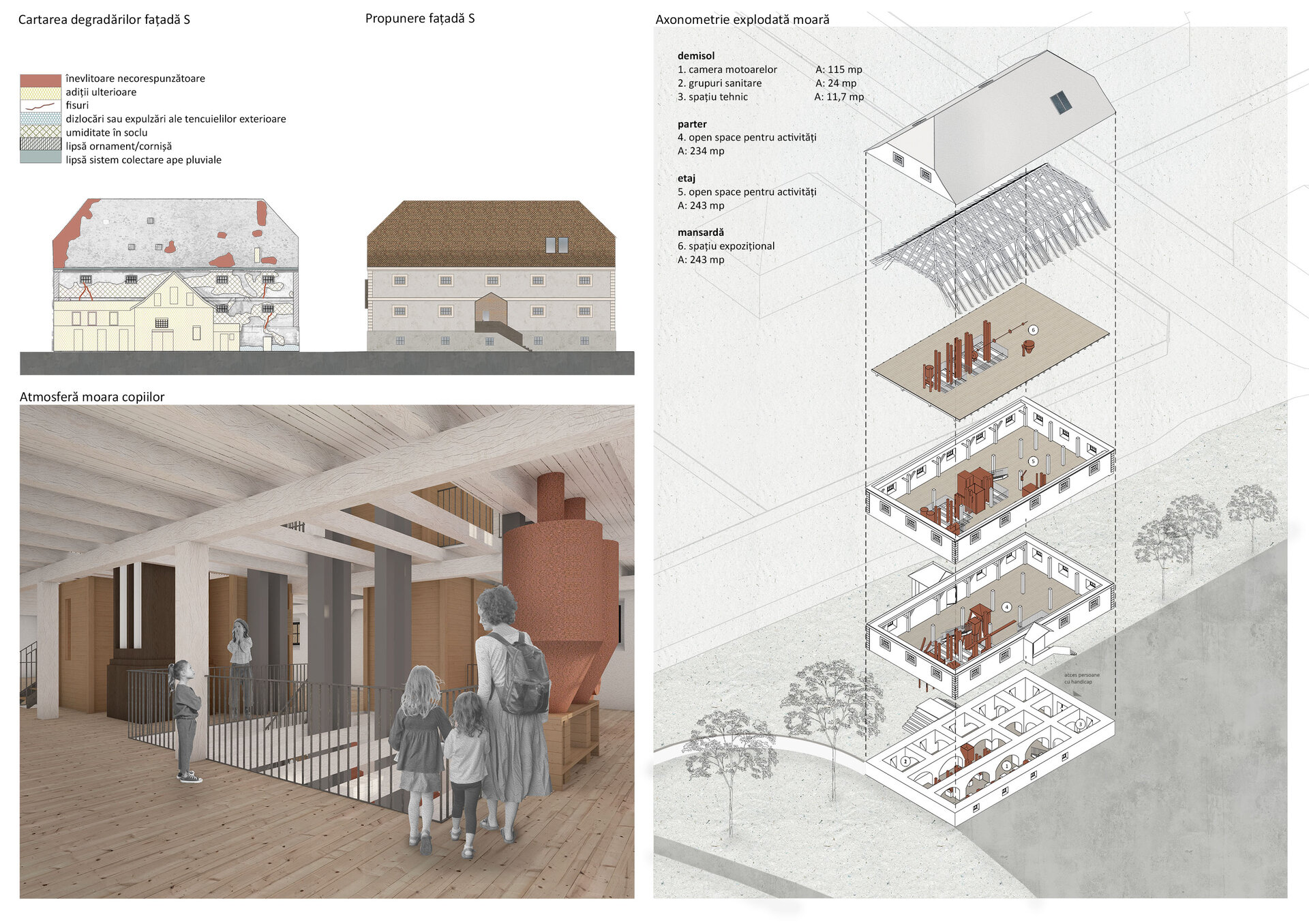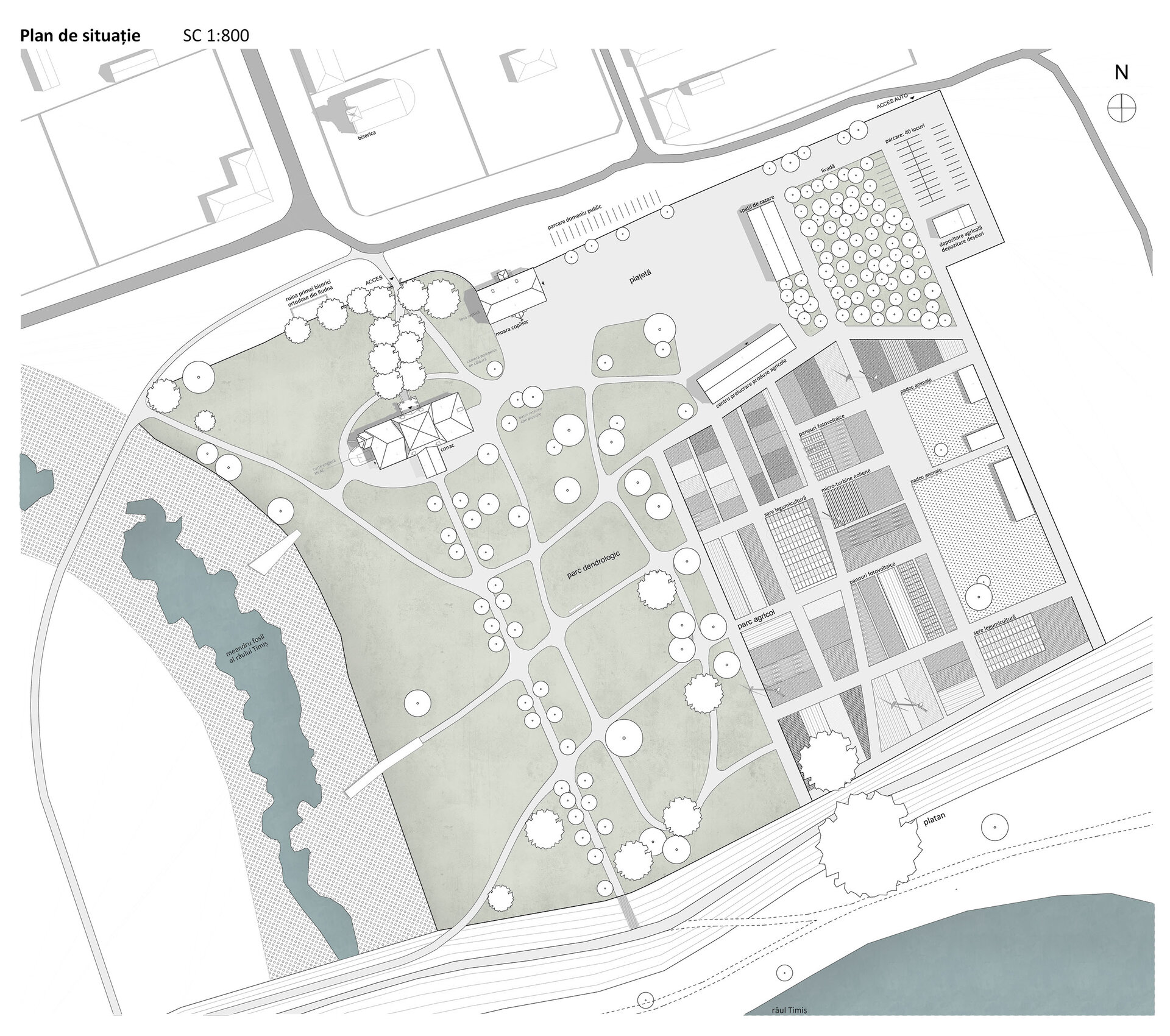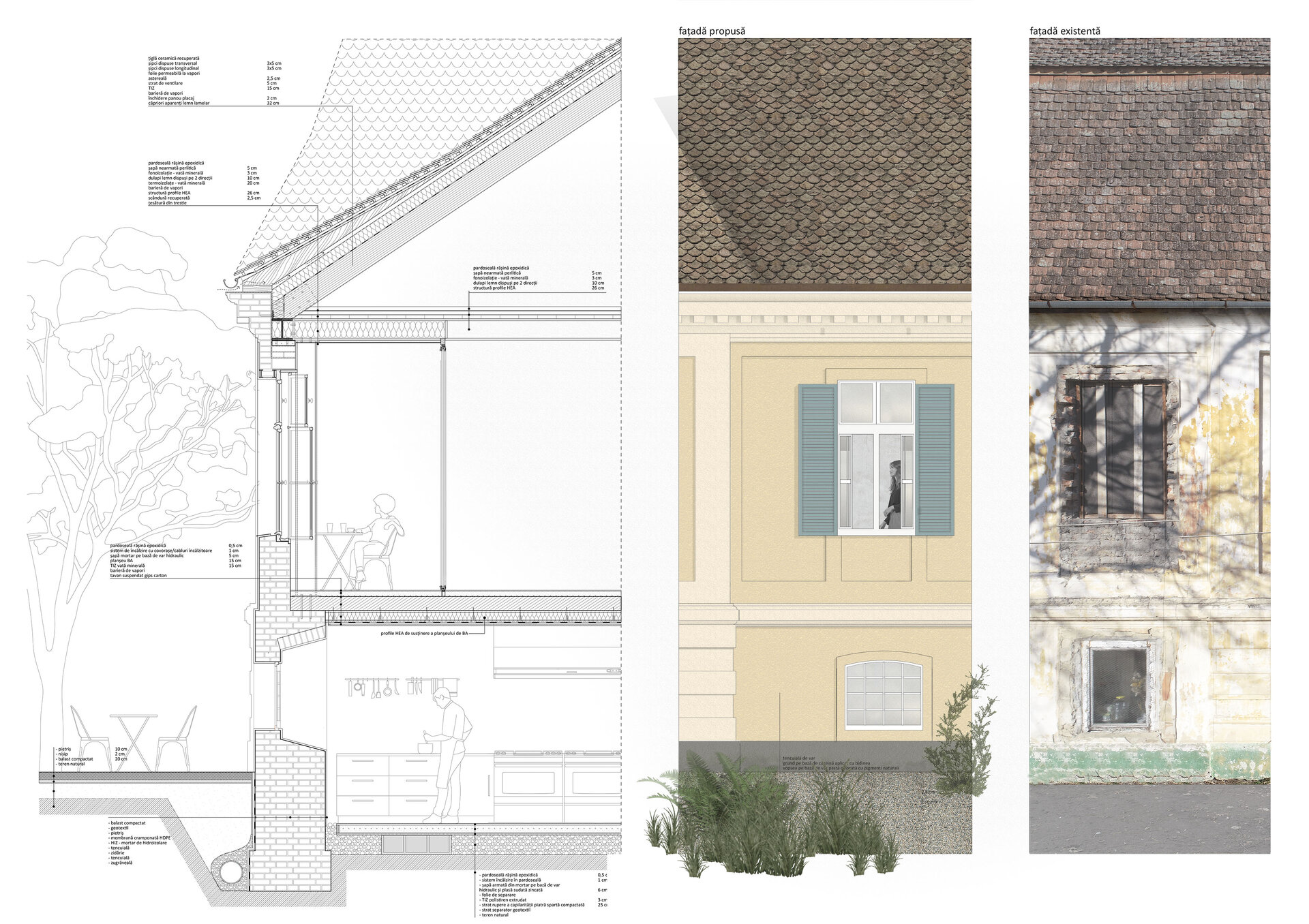
Agri-Park on the Nikolics domain
Authors’ Comment
The project aims to recover the Nikolics noble ensemble from Rudna village, Timiș County, by transforming it into an Agri-Park, while taking into account the consumption of resources, the usefulness of investments and the way they respond to climate change. It involves the implementation of an organic farm based on regenerative systems, which offers an alternative to the conventional supermarket products and develops around three components: hospitality, agriculture and education.
The Nikolics ensemble is one of the most important points along the proposed cultural route in Lunca Timișului. Confiscated during the socialist period and then nationalized, the Nikolics domain became a garrison, and later the CAP (Agricultural Production Cooperative) headquarters. The events of the 20th century dispossessed the buildings of their splendor, and the communities of their memory, all three buildings reaching an advanced stage of degradation. The existing buildings on the site -the manor house, the mill and the warehouse- are thus equipped with new "mechanisms" that will allow them to regain their usefulness, ensuring their continuity over time. The conservation works aim to ensure the survival of the original characteristics and values of the buildings, the reconstruction interventions aim to restore the formal integrity, while the modern interventions bring them in contemporaneity. The mansion, which is the central piece of the whole ensemble, received special attention in the recovery process. The ground floor works with the landscape allowing the main alley of the park to pass through the interior of the building, subtly juggling the interior-exterior boundary so that the walk through the house is perceived as part of the exploration course of the park. The austere interior, devoid of the richness of the ornaments specific to such a building, reminds us of the stages the building went through, leaving them visible. Reconstruction would have meant a denial of the history of the last century that involved the disappearance of the nobility, the destruction of the communist period, but also the fragmentation of the property.
The presence of sculptural objects, openings to perspective points, the way in which vegetation determines certain visual axes or form spatial structures, all invite the user to a journey of exploration and rediscovery of natural and built heritage, creating together with architecture a sense of place.
- Beyond the ruin. The conversion of the former tobacco warehouse of Isaccea
- Balneo-physio-therapeutic recovery center. Extension of Sylva Villa, Băile Govora
- Shelter with dignity
- The Bucharest City Loop
- Fort 13 Jilava. Political repression museum and research center
- Activating industrial premises – Student Center
- Hotel at Capidava
- Palaeontology research and visitor center – Hațeg District
- Memorial for the jews of Bukovina
- Agri-Park on the Nikolics domain
- Johann Michael Haydn Music Institute
- Creative Industries Factory in London
- Urban Cistern, Amman
- Refunctionalization and extension of the former sanatorium for border guards, Herculane Baths. Centre for body-mind treatment and accomodation
- “Țara Hațegului” International UNESCO Geopark. Fragments. Territorial diversity path
- The Roundhouse: built heritage academy
- Equestrian center of recovery and leisure on the former racecourse of “Nicolae Romanescu” park
- House of Movement. Ballet school and performing arts center in Bucharest
- Lacustrine Resort. The Danube River at Corabia
- Ludoteca
- Extension of the Baths ensamble, Băile Govora
- Drama Memorial
- New Public Architecture as Infill in Historical Context, Bucharest
- ECORIUM Local ecosystem research center
- Artist in Residence – Nae Petrescu Houses – Plantelor Street No. 56-58
- Extention of Public School of Arts and Crafts
- The Castle with Unicorns. Reactivation through school, arts and crafts of the Kornis Castle Ensemble in Mănăstirea Village
- House of games
- A New City Center – Conversion of the Pozzi Ceramic Factory, Laveno, Italy
- Urban Revitalization – Calea Moșilor
- Archaeological cultural center in the Constanta Peninsula
- Lapidarium. Extension of “Vasile Pârvan” Institute of Archaeology, Bucharest
- Pavilion complex within the “Măgura” sculpture camp, Buzău
- Recovery, revitalisation and insertion. Creative hub
- Integration through co-presence – Câmpulung Cultural Center
- C.U.B. Urban revitalization through social inclusion and cultural diversity
- Spatial Connections and Functional Conversion of Customs Warehouse, Bucharest
- ARTnEST – Performing Arts Center on Calea Victoriei
- Trauma and continuity – National Jewish museum, Victory Square, Bucharest
- Technological transformation hub
- The Enchanted Gardens of Ada Kaleh
- The revitalization of the Filipescu Park, Cultural Park Filipescu
- Terry Winery, Dragasani
- Mixed-function tower building (offices-hotel)
- Elca Market Square, Craiova
- The regeneration of Textila Factory
- Via Golden Quadrilateral. C Area. The Flow of Memory in Buciuman Cultural Landscape
